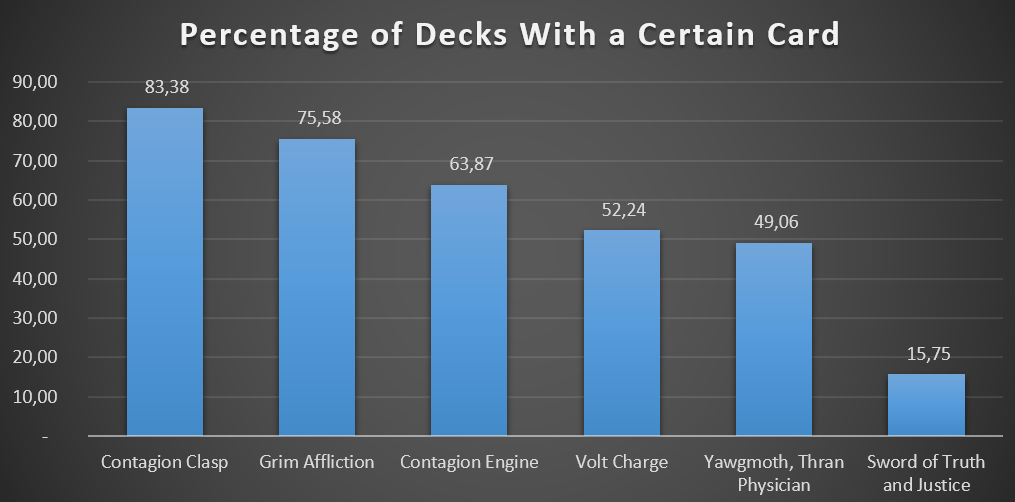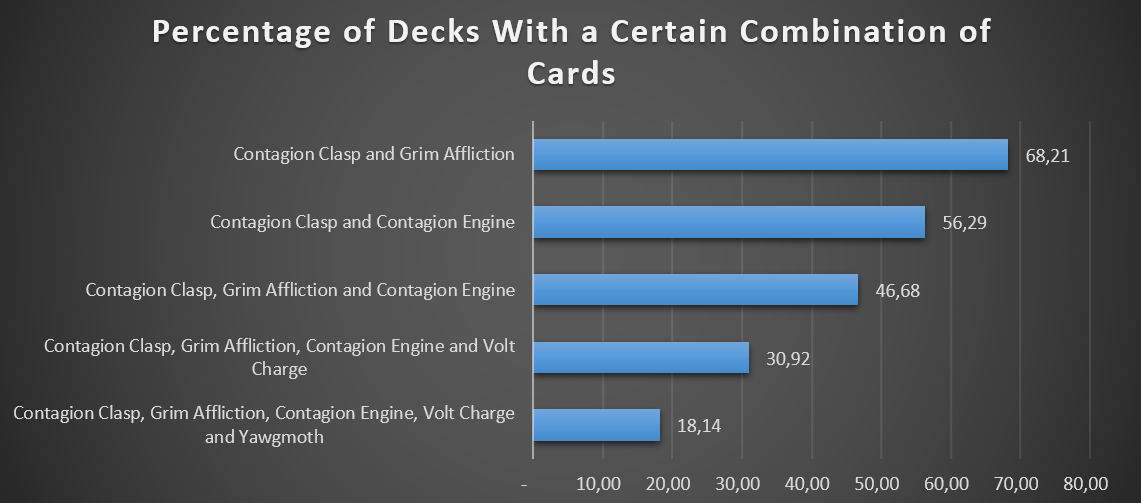Recross the Paths - The Scorpion God

(The Scorpion God | Art by Luis Lasahido)
You Can Count on the Vampires
Hello, everyone, and welcome back to Recross the Paths, a series that helps commanders to be seen under a new light.
Today I'll be talking about The Scorpion God. While being an extremely interesting commander, at times it feels almost as a prisoner of its own archetype, so today I'll try to grant our general an original environment to Proliferate in.
Stage One: The Deck
Almost every The Scorpion God deck is centered around shrinking your opponents' creatures through -1/-1 counters. Still, I think that we can take a step further, adding another kind of counter to our strategy: I'm talking about +1/+1s. In fact, making others' threats smaller is good, but making ours bigger is even better.
In particular, there is a tribe that interacts perfectly with them, even if it's not given credit for this: Vampires. As a matter of fact, several creatures of this type incorporate a way to either obtain, spread, or take advantage of these counters. Hence, I present you with The Scorpion God as a Vampire deck.
Step One: Vampires
Being in Rakdos grants us access to the vast majority of the Vampires legal in the format. Among them, there are some pretty powerful ones that care about pumping our creatures. Drana, Liberator of Malakir, Mephidross Vampire, and Necropolis Regent push us towards a very aggressive gameplay. All of them reward us for attacking our opponents and also have some built-in evasion, so that they can easily benefit from their own abilities.
Then, we can count on a large pool of Vampires that boost themself upon damaging our enemies. In particular, Heirs of Stromkirk uses its keywords to immediately start growing, Markov Blademaster can easily become a threat thanks to double strike, and Westgate Regent doubles its stats with every swing while also soft-protecting itself.
Lastly, we have some creatures that actively interact with +1/+1 counters. Bloodtracker and Falkenrath Exterminator can both boost their stats and, most importantly, one will draw us many cards on the way out and the other will be able to take out dangerous creatures. Lastly, Tenured Inkcaster will grant us huge additional damage to all of our opponents whenever our creatures attack.
Step Two: +1/+1 Counters Synergies
Making our creatures scarier than their raw stats is something we greatly appreciate. For this reason, Hagra Constrictor and Mer-Ek Nightblade are powerful pieces of our strategy, as they could grant us some direct damage that would otherwise be blocked. Moreover, Skyclave Shadowcat makes sure we take advantage of our destroyed creatures as well.
Kami of Celebration is a huge draw engine that fits perfectly with the all-out strategy we are bringing to the table. If that was not enough, it can help us boost our creatures' stats as well. Stensia Masquerade grants us redundancy in powering-up Vampires when they deal damage, but also makes them trickier to block. Last but not least, Thundering Raiju is yet another way to chip away from our opponents' life total even before blocks are declared.
Step Three: Proliferate
There aren't actually many ways to Proliferate in black and red. Nonetheless, we can rely on some evergreen goodies. Contagion Clasp and its bigger version Contagion Engine can spread counters multiple time during the length of a game for just four mana. Then, Sword of Truth and Justice associates proliferation with a +1/+1 counter and, most importantly, with protection from two removal-heavy colors.
Step Four: Haste Enablers
Our deck wants to attack and wants to do it as early as possible. For this reason, a certain number of cards that grant haste to all of our creatures feel like auto-includes. Nothing too fancy, just some optimal established cards, such as Anger, Hammer of Purphoros, and Urabrask the Hidden
Step Five: The Complete Decklist
The Scorpion God Vampires
View on ArchidektBuy this decklist from TCGplayer
Stage Two: The Data Room
We're now on to the last part of this deck tech: the data room. Was this idea actually unique? Let's compare the list against both the average Scorpion God deck and against the average Vampire deck to see what we gained (and lost) in the process.
The Average Scorpion God Deck
Popularity-wise, The Scorpion God isn't in a bad spot. It ranks 21st among Rakdos commanders and 420th overall, with 1384 registered decks according to EDHREC.
Using EDHREC's advanced filters, it's easy to see how Vampires and our commander don't have much in common according to the community. The only creature of this type seeing some sort of play is Yahenni, Undying Partisan, who appears in 1.7% of the decks.
With that in mind, I decided to look at how much the Scorpion God care about Proliferate overall.
The results are staggering. Excluding Sword of Truth and Justice (that people ignore for some reason; perhaps it's its price), all of the cards included see play in at least half the decks with this commander. Still, players may only include one or two of these cards for added value; therefore, I decided to conduct some further investigation.
In fact, I decided to look at how many of these lists play more than one of these pieces. Once again, the graph is pretty clear. Around 47% of them want three Proliferating engines, and 31% of them decide to play even the fourth one in Volt Charge. Only with the fifth, Yawgmoth, Thran Physician, the numbers decline. All in all, this data tells us about players' dedication to including cards with Proliferate in their decks.
Still, it's clear that nobody cared about spreading +1/+1 counters among their creatures. Out of all the cards that pump our board, the most played ones are Animation Module and Unspeakable Symbol, which are included in 6 decks each, more or less 0.4% of the total registered ones.
The Average Vampire Deck
To nobody's surprise, Edgar Markov is by far people's go-to commander when building a Vampire deck. But are those the same as the ones we play in our list?
Seeing the graph, the situation is peculiar nonetheless. In fact, we can distinguish three different tiers of creatures.
First, we have the staples, those included in more than half the decks and up to almost 90% of them. Among them, we find established picks, such as Cordial Vampire or Drana, Liberator of Malakir, as well as more recent introductions, like Vampire Socialite. These are what everyone has in mind when we think about Vampire; therefore, they don't represent innovation in any way.
Then, we have a central group, containing those cards that see some kind of play but end up being cut more often than not. Among them, Immersturm Predator, Stromkirk Noble, and Necropolis Regent are those that truly represent a change. In fact, being present in around 20% of the decks means that these creatures are still looking for a list that actually valorizes them, which is the whole point of this build. In particular, here they become active supporters of the subtheme of our deck.
Lastly, we have the tail of the graph, the cards hovering around 2% of inclusion rate and lower. They are included because of their positive synergy with our gameplan, but they are also the ones more at risk of being swapped out with more Vampires being printed in every set. In fact, among them we find all the creatures that need to hit our opponents to start growing, such as Bloodcrazed Neonate, Bloodmad Vampire, and Heirs of Stromkirk. While this is the founding idea of our deck, it's also a strategy that may be difficult to carry out in a format full of early blockers.
The Takeaways From Today's Article
- The Scorpion God is much more than just a pile of cards with Wither. While this may sound obvious, oftentimes its versatility is sacrificed in favor of a list that seems almost pre-built around it.
- The same goes for Vampires, a type that heavily suffers from its own success. Many playable creatures get lost among the crowd of new ones printed every year, to the point that a whole category of combat-centric ones are totally forgotten.
- The obvious limit of this list is how much it relies on connecting with creatures in a format in which one- and two-drops are extremely popular. Still, I think that the combination of haste enablers, such as Fervor, and +1/+1 counters is enough to get over the slump and push through in the mid-to-late game.
- To end on a positive note, it's basically certain that new Vampires will be printed each year. This means that, at any point, we will always have new toys to experiment with.
That’s all from me for the moment. I hope you enjoyed this deck tech, but now it’s on to you! What do you think of it? Would you have changed anything? Is there something you particularly liked? Most importantly, do you believe this was a true innovation? Let me know in the comments below!



EDHREC Code of Conduct